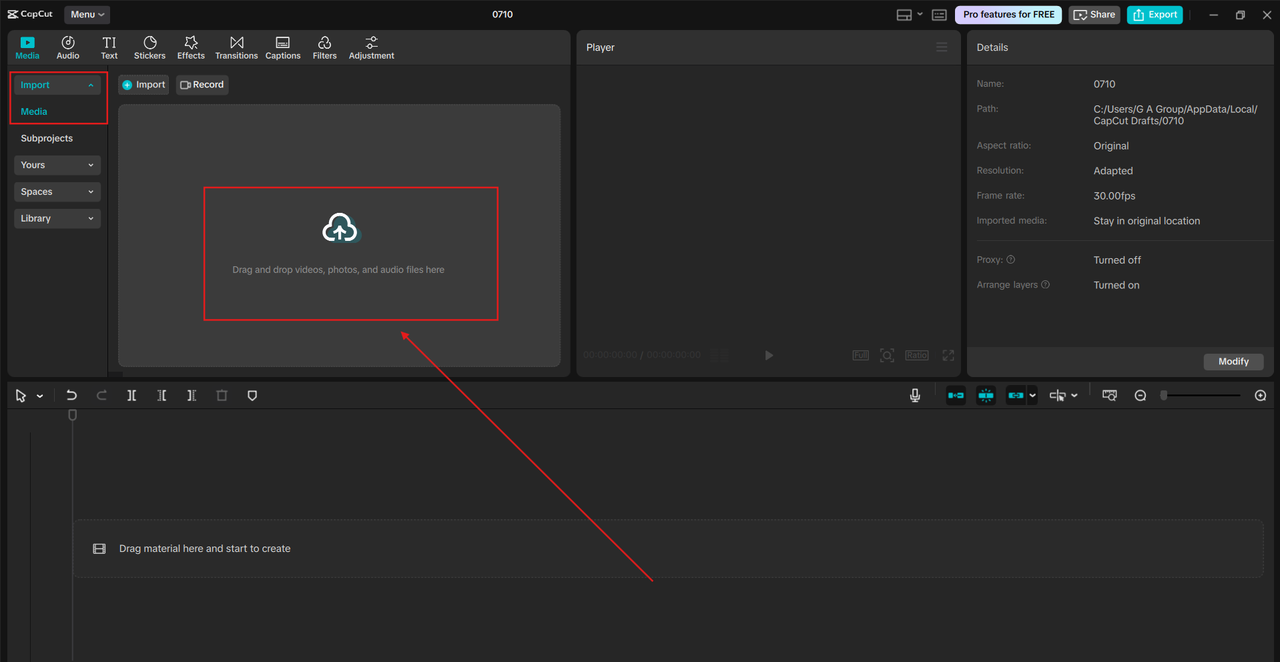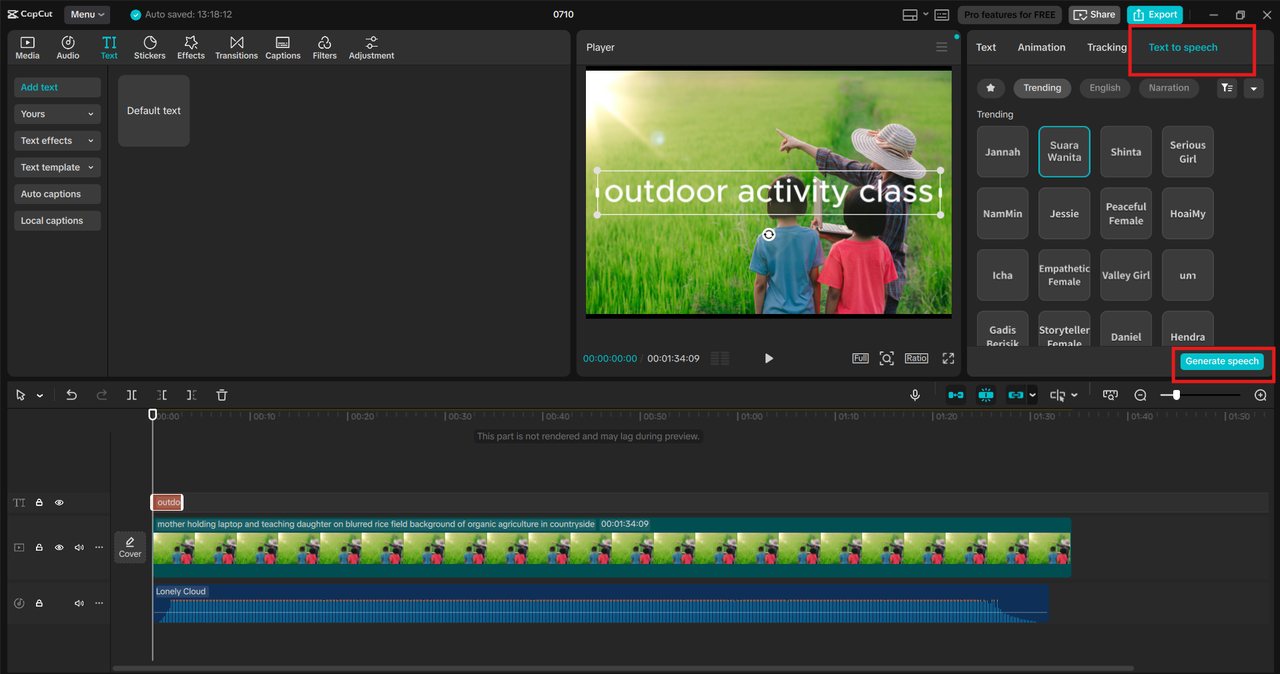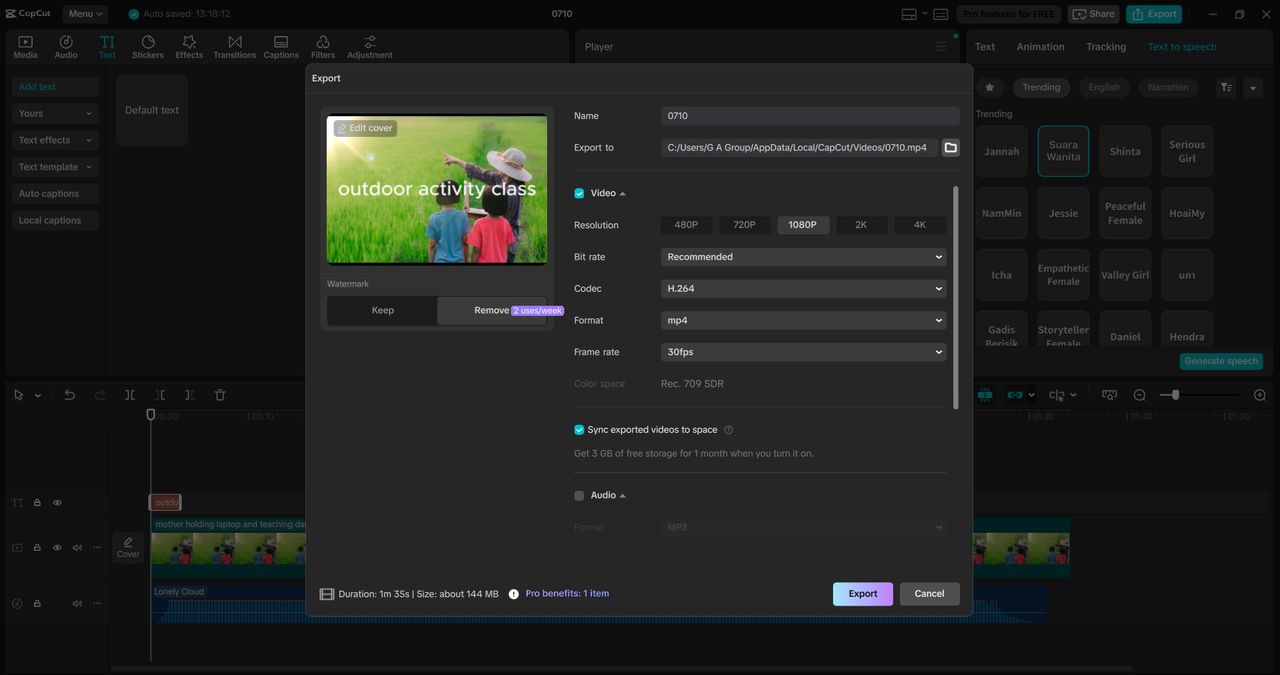Starting a podcast used to require expensive microphones, soundproof rooms, and hours of voice recording. But with tools like CapCut PC’s Text to Speech AI, anyone can become a podcast narrator, no mic needed.
Whether you’re camera shy, have limited recording gear, or want to save time, CapCut PC’s TTS feature makes it possible to narrate your podcast in a natural, human-like voice.
CapCut is widely known for video editing, but not everyone realizes how powerful its AI voice generator is. It can turn written scripts into smooth, emotionally expressive narration, making it a handy solution for solo podcasters, educators, marketers, and storytellers alike.
In this blog, you’ll discover how to use CapCut PC’s Text to Speech as your podcast narration tool—from writing your script to exporting high-quality audio. Plus, we’ll share tips to help you add tone, emotion, and clarity to each episode.
Benefits of Using CapCut PC’s TTS for Podcasts
Before jumping into the how-to section, let’s explore why CapCut PC’s Text to Speech AI tool is perfect for podcast creators:
- No need for recording gear: You can narrate a podcast even if you don’t own a mic or soundproof room.
- Multilingual voices: Choose from English, Urdu, Spanish, French, and many other languages.
- Flexible voice styles: Match the tone of your podcast—news-style, casual, serious, upbeat.
- Quick editing: Paste, edit, and adjust tone or speed in just a few clicks.
- Free to use on CapCut Desktop: Save money without sacrificing quality.
How to Use CapCut PC’s Text to Speech as a Podcast Narrator Tool?
Step 1: Write or Import Your Podcast Script
Every podcast begins with a strong script. If you already have one, that’s great! If not, write your script using simple, conversational language.
Here’s what you should keep in mind, break it into short, natural sentences. Use contractions (like “you’re” or “we’ll”) to sound more human. Include tone cues (e.g., [excited], [pause], or [serious]) if you plan to edit pauses later.
To Import Your Script to CapCut Desktop:
Open CapCut Desktop Video Editor. Create a New Project. Select the “Text“ tab from the top menu. Choose “Text to speech“. Paste your podcast script into the text box. CapCut supports large chunks of text, but for better control, break your script into segments (intro, topic A, topic B, outro, etc.).
Step 2: Choose a Suitable Voice and Tone
CapCut offers a range of AI voices, including male and female options in various accents and moods. For a podcast, tone matters a lot—it keeps your audience engaged.
Here’s how to choose the right voice:
After pasting your text, choose a voice based on your podcast style:
- Storytelling or Bookcast: Calm, warm female voice.
- Tech or News Podcast: Confident, clear male or female voice.
- Kids or Fun Podcast: Energetic, youthful voice.
You can also adjust the speed and pitch to match your pacing better. CapCut even allows you to add background music later, so you don’t have to worry about making it feel too robotic.
Step 3: Export, Edit, and Add Final Touches
Once you’re satisfied with the narration voice, click “Generate speech” to drop the TTS voice into your project.
You’ll now see the audio track in your timeline. You can:
- Split the audio where needed.
- Add background music or intro jingles.
- Insert breaks or sound effects using the Audio tab.
Want your podcast to look like a full video podcast with visuals for YouTube? You can add slides, text animations, or background loops from CapCut’s stock media.
Finally, export your audio by clicking “Export” and selecting MP3 if you only need audio or MP4 if you want a video format. Try AI Video Upscaler for clear and high-quality videos. Now you have a narrated podcast ready to share on Spotify, Apple Podcasts, YouTube, or anywhere else.
Tips to Make Your Podcast Sound More Natural with CapCut
Here are some smart tips to take your AI-narrated podcast to the next level:
- Use short paragraphs in your script for natural pauses. Long text blocks may sound rushed or monotonous.
- Add pauses manually: You can break sentences and insert small silent sections for realism.
- Mix in music and effects: A soft instrumental background makes AI narration feel more alive.
- Test different voices: Don’t settle on the first one—compare several to see what matches your brand.
- Match tone to content: Use an enthusiastic voice for motivation, and a slower voice for deep discussions.
Conclusion
Using CapCut PC’s Text to Speech as a podcast narrator can simplify your workflow, save time, and open up podcasting to people who don’t have a studio or prefer not to record their voice. The AI voices are surprisingly realistic, and the editing options let you tweak the sound just the way you like it.
Whether you’re just testing the podcasting waters or looking for a scalable way to narrate your episodes, CapCut makes it easy and free. Try it today and start creating compelling audio content in minutes—no mic required.




